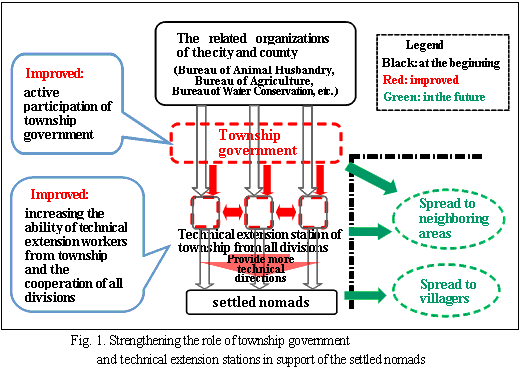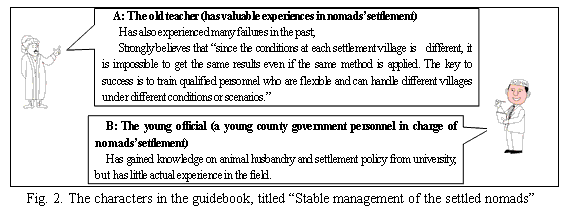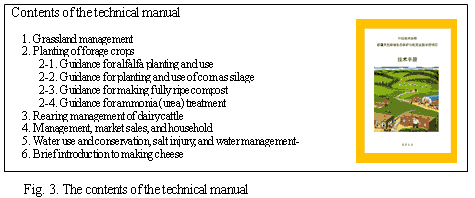Local government-led support measures and technical assistance to settled nomads in Xinjiang Uygur Autonomous Region
Description
In order to mitigate the intense degeneration of winter pasture, the local government of Xinjiang Uygur Autonomous Region developed a policy on grazing prohibition and grazing rest by combining stall-feeding during winter with grazing at natural pasture during summer. This policy is aimed at providing the nomads a stable life while protecting and restoring natural grassland. It requires the nomads to form settlements and promotes a new mode of agricultural management.
Thus far, results have been unsatisfactory owing to the settled nomads’ lack of experience in planting forage and feeding livestock. In addition, the distribution of technical guidance documents from the county level to the settled nomads had to pass through several local administrative divisions.
Therefore, there is a need to demonstrate a comprehensive and systematic technical assistance program, in accordance with the development policy of the village, to enable the nomads to cope with the transition as soon as possible.
Through the first half of the pilot project, we were able to confirm that the township government played an important role in improving the infrastructure of the villages for settlement and for providing technical guidance to settled nomads. Therefore, enhancing the administrative skills of township government officials is very important towards the stable management of villages for settlement.
At the second half of the pilot project, the technical capabilities of field extension workers were strengthened in order to promote cooperation with local officials. We also gave the nomads directions and on-the-job trainings to get them more actively involved in the settlement project.
The outcome of this research was the publication (in Chinese) of a guidebook and several field-specific manuals, whose contents came from ideas obtained from work and technical problems confronted by the pilot project. All aforesaid books and manuals have graphs or pictures that are easy to understand.
The guidebook, titled “Stable management of the settled nomads,”provides extensive, knowledge-based information to technical personnel tasked to help the nomads. It gives ideas on how to deal with problems over time, through negotiations and dialogues. Manuals on planting and livestock-raising were also published for the Kazakh nomads who cannot read Chinese.
The autonomous government may begin enforcing the nomads’ settlement policy, for example, by building new settlement sites around the two demonstration villages, in the hopes of accelerating the dissemination of the new policy and the results of this study. The local (city) and county science bureaus who participated in the management and operation of the pilot project at the two demonstrative villages are currently making plans for its widespread implementation.
This project was carried out with JICA as implementing agency.
Figure, table
- Affiliation
-
Japan International Research Center for Agricultural Sciences Rural Development Division
- Classification
-
Technical
- Program name
- Term of research
-
FY 2012 (FY 2007- FY 2012)
- Responsible researcher
-
Iga Hirofumi ( Rural Development Division )
Omori Keisuke ( Rural Development Division )
MIERUKA ID: 001793Hasada Katsumi ( Rural Development Division )
MIERUKA ID: 001738Kobayashi Tsutomu ( Rural Development Division )
MIERUKA ID: 001805Marumoto Mitsuru ( Rural Development Division )
Chiba Seiichi ( Rural Development Division )
- ほか
- Publication, etc.
-
Iga, H., et al. (2013) 定居牧民稳定经营指导读本(日文・中文), 技术手册(日文・中文・哈文), 新疆天然草地生态保护与牧民定居示范项目 成果报告书
- Japanese PDF
-
2012_07_A4_ja.pdf40.46 KB
- English PDF
-
2012_07_A4_en.pdf171.73 KB



